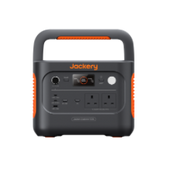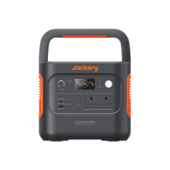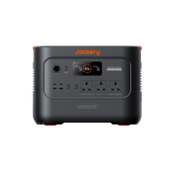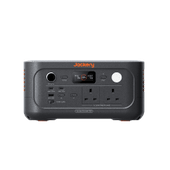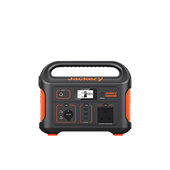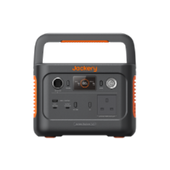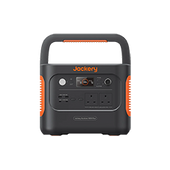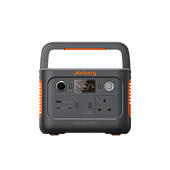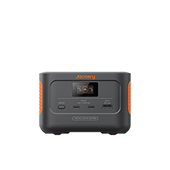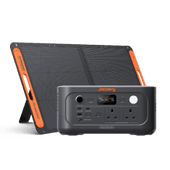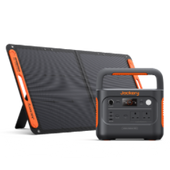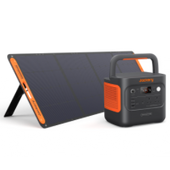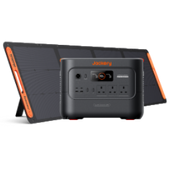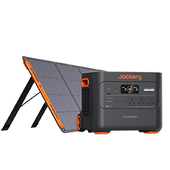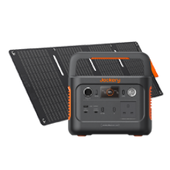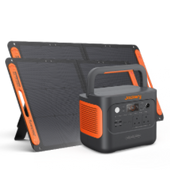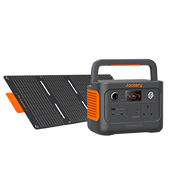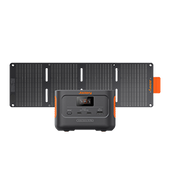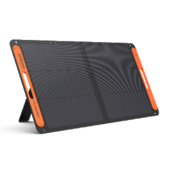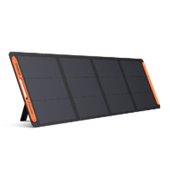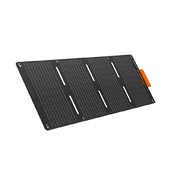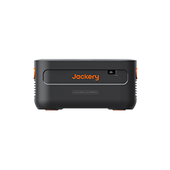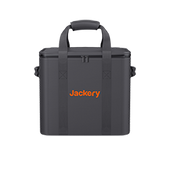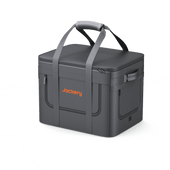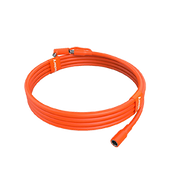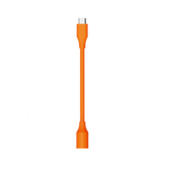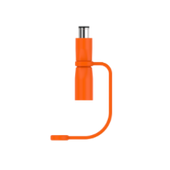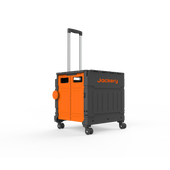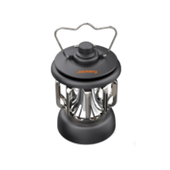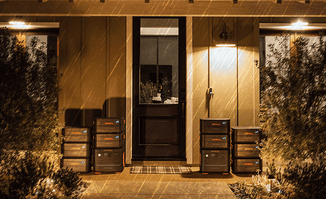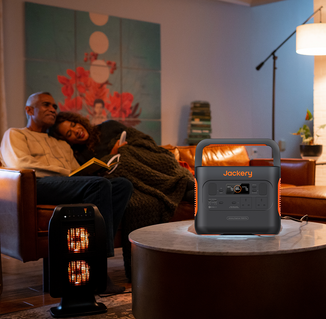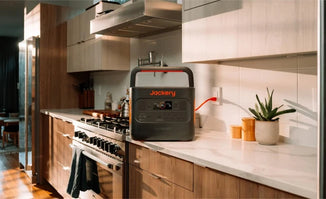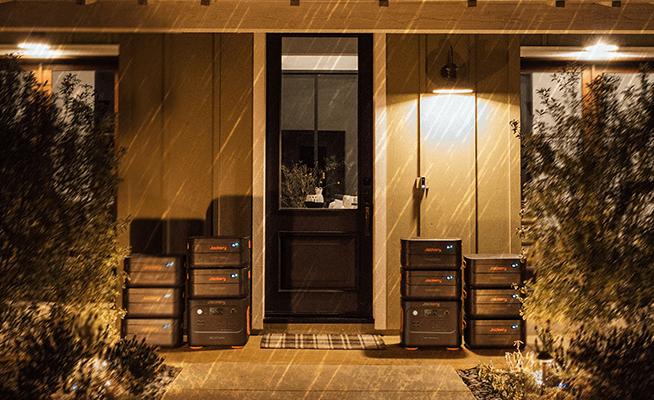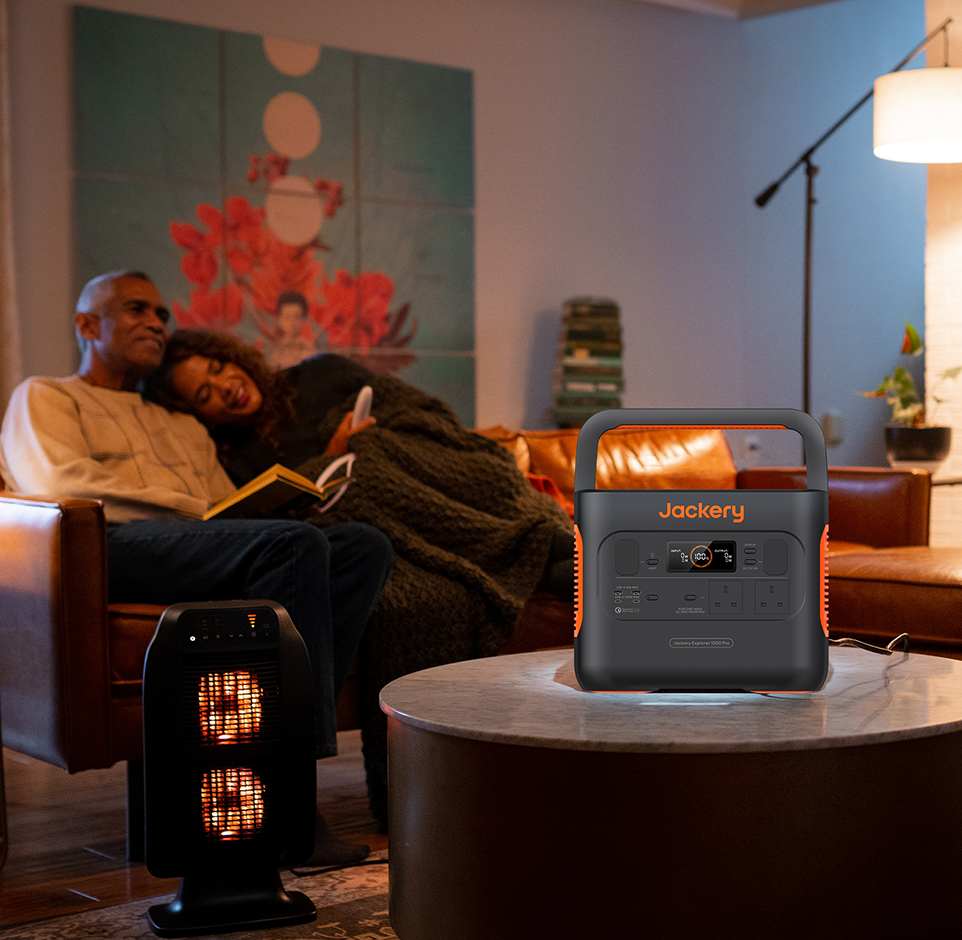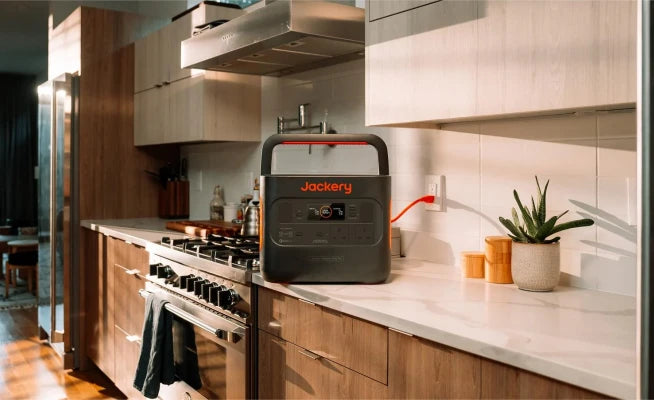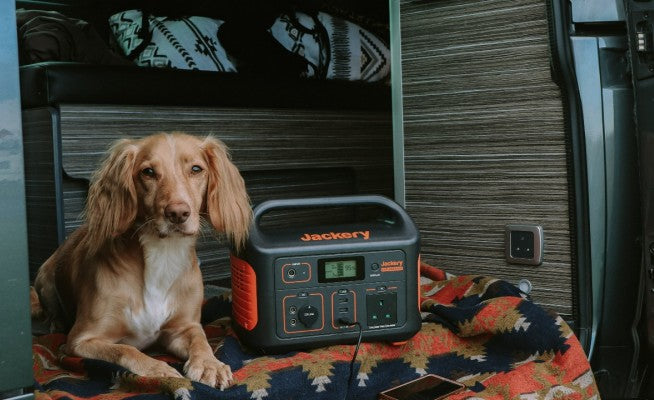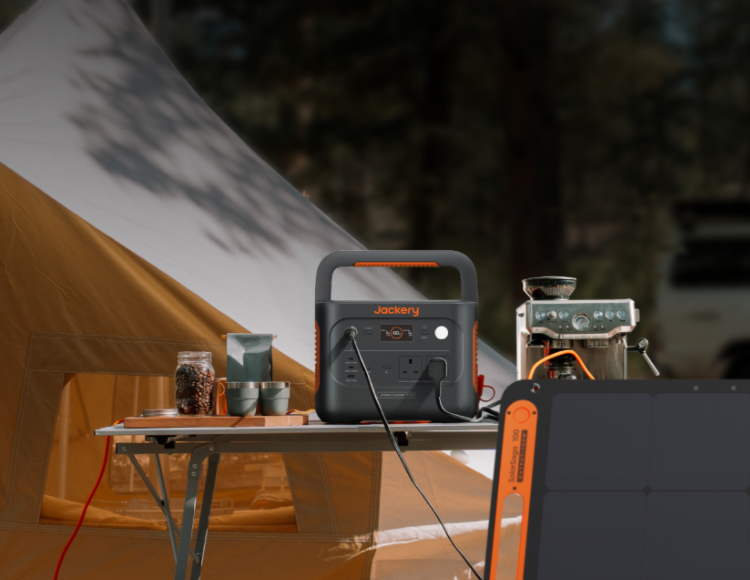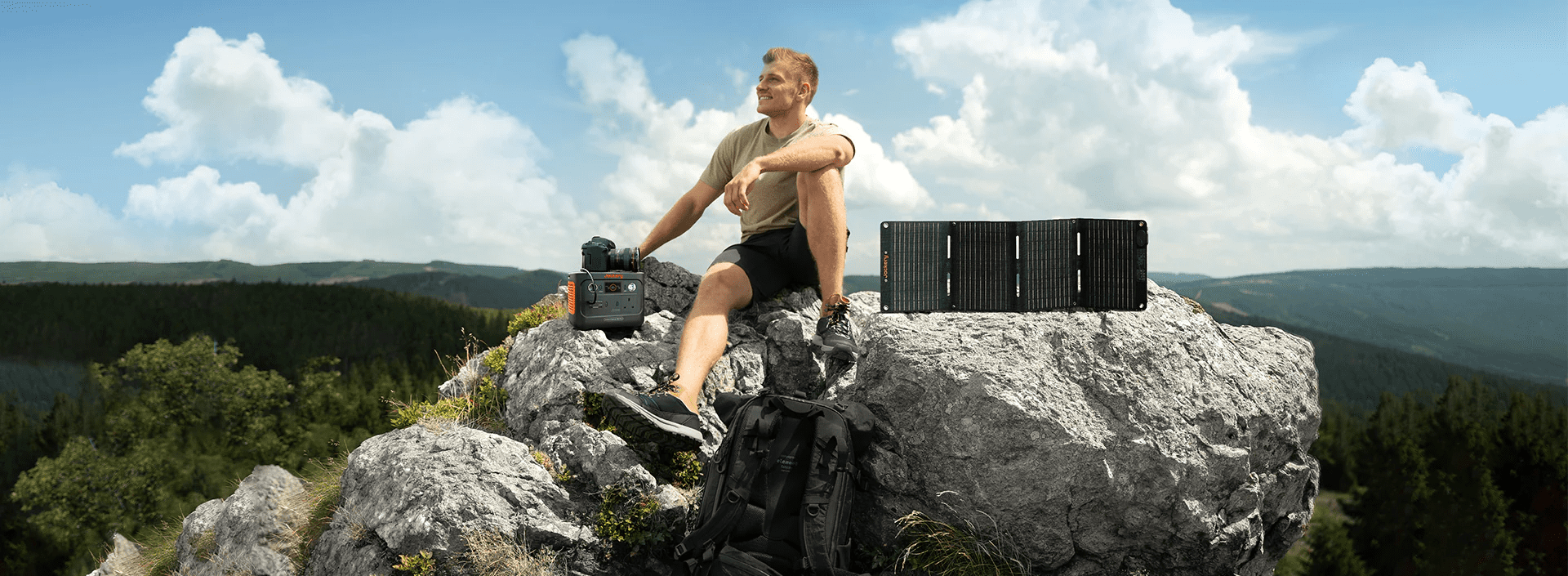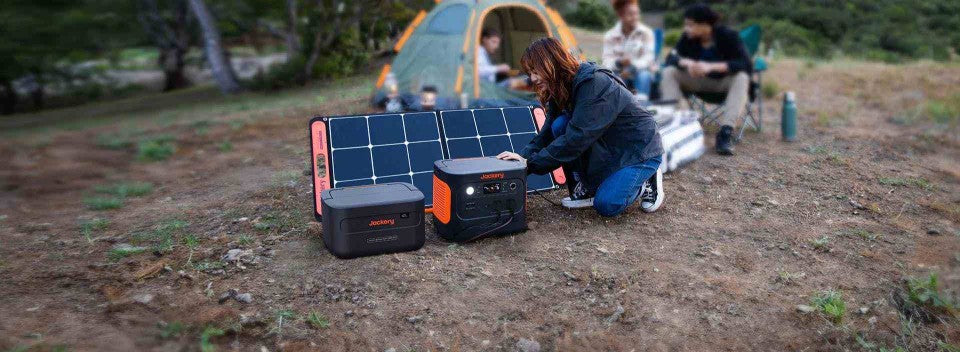Solar power systems are a clean, renewable energy source. They are also safe, reliable, noiseless, and pollution-free. Solar power systems are gradually becoming widely used worldwide. In the UK, 1.4 million households use free solar energy.
This article explains everything you need to know about solar power systems for UK homes, including how they work, their costs, maintenance tips, and how to choose the most suitable system. Moreover, we highly recommend Jackery Solar Generator, a portable solar power system, if you want a more convenient and portable solar system for indoor and outdoor uses.
|
Key Takeaways: |
|
- A solar power system generates electricity for home or business use through solar panels, inverters and other equipment. - A solar power system mainly relies on the collaboration of its components to achieve the generation, conversion, supply and storage of electrical energy. - In the UK, a small house with 1-2 bedrooms usually requires a 2- 3kW solar power system. Installing a 3kW solar power system costs between £4,500 and £5,500. - For most UK homes, installing a solar power system is worth considering. Several key factors should be considered when choosing the best solar power system. - We highly recommend Jackery Solar Generator 2000 Plus and 2000 v2 as portable solar power systems for powering appliances indoors and outdoors. |
What Is a DIY Solar Power System?
The sun provides warmth and light and is an excellent renewable energy source. It radiates more energy to the earth's surface daily than the entire world consumes in a year. Therefore, more and more British households are installing solar power systems to generate electricity.
Solar panels, inverters, and other equipment generate electricity for home or business use.
The following will introduce the composition of the solar power system and its application scenarios in detail.
The Composition of the Solar Power System
If you want to generate electricity yourself, you need a complete solar power system. The essential components of a complete solar power system are as follows:
Solar panels
Inverter
Controller
Other components (such as cables and mounting brackets)
Energy storage battery (optional)
Types of Solar Power Systems
Different types of solar power systems can meet specific energy needs and settings. The main types of solar power systems include:
|
Types of Solar Systems |
|
|
Grid-Connected System |
Connected to the local utility grid |
|
Off-Gird System |
Independent of the utility grid |
|
Hybrid System |
A mix of grid-connected and off-grid systems |
|
Community System |
Solar power systems shared by multiple homes or businesses |
In short, in recent years, the application scenarios of solar power systems have become more and more extensive, bringing economic and environmental benefits to more people's lives. For example, if you are camping in some remote areas or areas with incomplete power infrastructure, solar generators (such as Jackery Solar Generator) can provide a reliable power supply.

How Does a Solar Power System Work?
The working principle of solar power systems is mainly based on the photoelectric effect, especially the photovoltaic effect. In simple terms, the core of each system's working principle is converting sunlight into solar electricity.
The following is a detailed step-by-step analysis of the working principle of solar power systems:
Absorb Solar Energy
Multiple photovoltaic cells (mainly made of silicon) are connected and packaged in a frame to form a solar panel. When sunlight shines on the solar panel, these cells absorb the sun's energy (photons). The photon can excite electrons to form electron-hole pairs if it is large enough.
Generate Current (direct current)
The inside of the photovoltaic cell forms a PN junction with unidirectional conductivity through a doping process. Therefore, when electron-hole pairs are generated under light, the built-in electric field separates the electrons and holes, and the electrons move to the N-type semiconductor. In contrast, the holes move to the P-type semiconductor.
The separation of electrons and holes causes the accumulation of opposite-sign charges at both ends of the battery, thereby generating a photovoltage.
Connecting the two ends of the photovoltaic cell to form a closed loop, electrons flow from the N-type semiconductor to the P-type semiconductor (they flow in one direction), creating a current (DC). This current (DC) can be used directly or sent through wires to energy storage devices or the grid.
Invert Current (AC)
The inverter receives the energy generated by the solar panel (DC). It converts it into a form that can power the electrical load of the home or business (AC) during the solar power system's entire process.
Distribute Power
The AC power converted by the inverter is transmitted through cables to power the home or business equipment.
Energy Storage (Optional)
By adding a battery energy storage system, your solar power system can store a small amount of backup power in the battery bank for use during emergencies (such as power outages).
In summary, the solar power system mainly operates by collaborating with a series of components to generate, convert, supply, and store electrical energy.

What Size Solar Power System Do I Need?
More and more UK households are considering installing a solar power system. However, how can the right system capacity be determined and adequate power supply ensured? Here is a detailed guide on assessing the capacity of a solar power system for UK households.
The first step in determining the solar power system required for your home is usually to decide on your current energy consumption.
Step 1: Check Your Electricity Bill
Please check your recent annual electricity bills to determine your relevant yearly power consumption and calculate your average annual power consumption (for example, 2,700kWh).
Step 2: Determine the Required Solar Power System Capacity
You can determine the necessary solar power system capacity based on the average annual power consumption.
A small house with 1-2 bedrooms in the UK usually requires a 2-3kW solar power system. A medium-sized house with 2-3 bedrooms usually requires a 4-5kW solar power system. Solar power systems with a capacity of 6kW or more are generally suitable for a large house with 5-6 bedrooms.
Step 3: Estimate the Number of Solar Panels
The power and area of the solar panel largely determine how many solar panels you need.
Consider the Power of Solar Panels
In the UK, domestic solar panels typically have a power of between 300 and 400 W (or 0.30 kW to 0.40 kW). Generally, the higher the power, the more electricity the solar panel will generate, and the fewer solar panels will be needed.
For example, how many 350W (0.35 kW) solar panels are needed for a 6kW solar power system?
6kW / 0.35 kW ≈ 18
So, a 6kW solar power system would require approximately 18 350W (0.35 kW) solar panels.
Step 4: Consider the Roof Area
Most houses in the UK have roofs that can accommodate solar panels. However, if your roof has windows, chimneys, or vertical flues, this may reduce the space available for the solar panel system. In the UK, most solar panels require approximately 1.44 square meters of roof space.
Here are the capacities and sizes of solar power systems commonly used in UK homes:
|
House Size |
Household Energy Consumption |
Solar Panel System Size |
Number of Solar Panels (350W) |
Required Roof Space (350W) |
|
1-2 bedroom |
1,800kWh |
2-3kW |
6-9 |
10-16m² |
|
2-3 bedrooms |
2,700kWh |
4-5kW |
12-15 |
20-26m² |
|
4-5 bedrooms |
4,100kWh |
6kW |
18 |
32m² |
(Data Source: Green Match)

How Much Does a Solar Power System Cost in the UK?
The cost of a solar power system depends mainly on its size. Generally, the larger the solar power system, the more electricity it can generate, but the higher the upfront cost. However, a more extensive solar power system can save you more on electricity bills in the long run.
Cost of Solar Power Systems in the UK
In the UK, standard domestic solar power systems are usually between 3 kW and 6 kW, which is generally enough to meet the daily electricity needs of the average home. For example, installing a 3kW solar power system costs between £4,500 and £5,500.
Here are the costs of several different sizes of standard domestic solar power systems in the UK (excluding energy storage batteries):
|
System Size |
System Cost |
|
3kW |
£4,500 - £5,500 |
|
4kW |
£5,000 - £6,000 |
|
5kW |
£7,500 - £8,500 |
|
6kW |
£9,500 - £10,500 |
Cost of Adding Energy Storage Batteries to a Solar Power System
While energy storage batteries will increase the overall cost of a solar power system, they can store some electricity for use when needed. Generally, a 4 to 12kWh energy storage battery is sufficient for the average domestic solar power system. For example, adding 6 - 7kWh of energy storage batteries to a 3kW solar power system costs about £9,500 to £13,500.
The following table shows the cost of energy storage batteries of different capacities in the UK:
|
Solar Battery Size |
Solar Battery Cost |
|
4 - 5kWh |
£3,500 - £5,000 |
|
6 - 7kWh |
£5,000 - £8,000 |
|
9 - 10kWh |
£8,000 - £9,500 |
|
11 - 12kWh |
£9,000 - £10,000 |
(Data Source: Green Match)
Jackery Solar Generators Explained
If you think the rooftop solar system costs too much, the portable solar system could be a wise choice. Solar generators have many benefits. For environmentally aware users, they are essential since they produce clean electricity without emitting the same pollutants as traditional gas or diesel generators.
Once they are up and running, they have very low operational costs. Fuel doesn't need to be purchased, and because they have fewer moving parts, they typically require less maintenance.

We recommend Jackery Solar Generators, which combines Jackery Solar Panels with Portable Power Stations to create a portable solar set. Jackery offers portable power solutions ranging from 99W to 12 kWh, capable of powering up to 99% of appliances, including washing machines, refrigerators, microwaves, etc.
Also, the Jackery Portable Power Stations are compact and easy to carry, so you can put them everywhere in your home or on your outings. Compared to gas or other traditional generators, they are safer to use, and you can even use them while sleeping.
Jackery Solar Generator 2000 v2
Jackery Solar Generator 2000 v2 combines Explorer 2000 v2 portable power station and SolarSaga 200W solar panel. It has a 2042Wh capacity and a 2200W power output, enough to power most appliances at home or outdoors during camping, RVing, and off-grid living.

(*The working hours are only for reference; the actual working hours depend on your usage.)
Jackery Explorer 2000 v2 Portable Power Station:
With its remarkable 2042Wh capacity and 2200W output, the Jackery Explorer Portable Power Station 2000 v2 can power most home appliances. Additionally, it has two AC outlets, one USB-A 18W connector, and two USB-C ports (100W + 30W), enabling you to charge numerous devices simultaneously, including laptops and phones.
At approximately 38.6 lbs or roughly the weight of a suitcase, it is the first 2kWh LiFePO4 power station in the world with cutting-edge EV-grade CTB (Cell to Body) Structure technology⁵. It is the ideal power source for camping, road trips, and off-grid life, and it has a collapsable handle for convenient carrying.
The CTB structure allows for a compact, potent design, increasing space efficiency to 59%. Its 13.2 × 10.4 × 11.5-inch size, similar to a medium printer, makes it easy to fit in your car.
It has demonstrated resilience even in earthquakes up to 9 by passing the demanding IEC60068-3-3 seismic test. You may feel secure knowing it can manage bumps, falls, and challenging circumstances wherever you go because it is drop-resistant and built to withstand the unexpected.
Jackery SolarSaga 200W Solar Panel:
The Jackery SolarSaga 200W Solar Panel can increase solar conversion efficiency by up to 25%. It has a long-lasting ETFE-laminated case and adjustable tilt for optimal sunlight absorption. Ideal for home backup and outdoor excursions, this device is lightweight, foldable, and simple to connect to a power source.
Jackery Solar Generator 2000 Plus
Jackery has unveiled the Solar Generator 2000 Plus, a cutting-edge portable power solution with exceptional performance for off-grid living. Thanks to its substantial capacity and formidable power output, this device can sustain the operation of standard off-grid appliances for several weeks and fulfil all the power needs associated with outdoor adventure or professional activity.

(*The working hours are only for reference; the actual working hours depend on your usage.)
Jackery Explorer 2000 Plus Portable Power Station:
The Jackery Explorer 2000 Plus allows adding extra battery packs, which boosts the capacity from 2 kWh to a remarkable 12 kWh, thus significantly enhancing the solar charging capabilities. With the ability to be expanded to 3000W, this solar product offers a 30% higher rated power than other 2 kWh solar goods available in the market.
The Explorer 2000 Plus is an industry's pioneering add-on battery pack that can be recharged using solar panels. This feature enhances versatility, improves charging efficiency, and reduces charging time. The LiFePO4 battery, with its sophisticated technology, guarantees a lifespan of 10 years, even with daily usage limited to once per day. Jackery Solar Panels generate more energy over their lifespan due to their exceptional solar conversion efficiency, reaching up to 25%.
With six SolarSaga 200W solar panels, the Solar Generator 2000 Plus can be fully charged in about two hours. Using solar energy rather than the grid to charge, the power source becomes completely autonomous. You can also choose wall sockets or carports to recharge it for 1.7 hours and 25 hours.
Jackery SolarSaga 200W Solar Panel:
Go green fast with the Jackery SolarSaga 200W sunlight Panel's high sunlight conversion efficiency of up to 25%. It is the ideal power source for outdoor travel and home backup because of its ETFE-laminated case, which prolongs its lifespan, and the suggested angle, guaranteeing optimal sunlight absorption. For the perfect solar power system, it is collapsable, portable, and rapidly connects to a power station.
Are Solar Power Systems Worth It for UK Homes?
Before buying and installing a solar power system for your home, you must know if it is worth the investment. However, it is impossible to confirm whether a solar power system is worth the investment without considering its advantages and disadvantages.
Therefore, the following will assess whether solar power is worth it for UK households by analysing its advantages and disadvantages.
Advantages of Solar Power System
For most UK households, using a solar power system generally has the following advantages.
Save on Electricity Costs: Any electricity produced by the solar power system is entirely free, and UK households can use it to power their home appliances or devices for free. Therefore, UK households can reduce the electricity they buy from the grid and save on electricity bills.
Improve Energy Independence: Using a solar power system to generate electricity (especially in remote areas) will give you greater energy independence and reduce your dependence on the grid.
Clean and Environmentally Friendly: Solar energy is renewable, so you don't need to burn fossil fuels (which produce pollution or greenhouse gases) to power your home.
Increase Property Value: In the UK, properties with solar power systems installed are desirable to potential buyers. Therefore, they tend to sell faster and at a higher price.
Disadvantages of Solar Power Systems
Apart from the apparent advantages, solar power systems have some disadvantages that cannot be ignored.
High Upfront Costs: The upfront purchase and installation costs of solar power systems are high, a barrier for many UK homeowners. For example, in the UK, installing a 3kW solar power system (excluding batteries) costs between £4,500 and £5,500.
Dependence on Sunlight
Solar power systems are most efficient in direct sunlight. They will hardly work on cloudy days without sunlight.
In summary, installing a solar power system in the UK is worth considering. For most UK homes, solar power systems are the best and most cost-effective way to generate green energy. However, please carefully consider whether to install a solar power system.
How to Choose the Best Solar Power System?
If you want to choose the best solar power system in the UK, consider several key factors.
Product Quality
When choosing the components of a solar power system, please focus on the quality of core components such as solar panels and inverters. Each component's power, voltage, and other parameters must be accurately matched. For example, a low-quality inverter may reduce the system's efficiency by more than 15%.
Warranty and After-sales
The warranty period for core components such as solar panels, inverters, and battery storage is crucial. For example, most solar panels have a warranty period of up to 25 years; the output power in the 25th year must be at least 80% of the initial value.
In addition, value-added services such as intelligent monitoring systems, regular inspections, and fault warnings can improve the stability of solar power systems.
Customer Reviews
When choosing a solar power system, consider other customers' reviews to judge the supplier's reputation for service quality, reliability, and customer support. For example, you can prioritise honest user feedback on platforms like Google Reviews. Please focus on key reviews, such as long-term stability (over 3 years), extreme weather performance, and after-sales service quality.
In summary, experienced installers are essential to optimising solar power system performance and ensuring a safe installation.
Maintenance Tips for Solar Power System
If you want to ensure that your solar power system operates stably and long-term, it is crucial to master the correct maintenance methods. Here are some tips for maintaining the solar power system:
Tip 1: Daily Maintenance and Cleaning
Most of the maintenance work of the solar power system revolves around removing debris and dust from the panels.
Check the solar panel's surface every month to remove obstructions such as leaves and bird droppings. If there is dust, wipe the solar panel with clean water and a soft cloth, and avoid using corrosive detergents.
Clean up the accumulated water on the solar panel in time after rain to prevent water stains from affecting the transmittance.
Tip 2: Regular Inspection
Although solar panels have no moving parts, they must be inspected regularly. Observe whether the connecting wires of each part are worn, loose or corroded. Check the sealing of the junction box after rain and replace the waterproof rubber ring if necessary.
Tip 3: Maintenance of Key Components
The power generation of the solar power system depends on the joint operation of various parts, so in addition to the solar panel, you also need to pay attention to the operating status of other components.
Please check whether the inverter's cooling fan usually operates every quarter to prevent it from shutting down due to overheating. Also, please regularly check the tightness of the bracket bolts (especially before the typhoon season), rust, and tilt angle.
In short, if any unresolvable failure occurs, do not try to fix it quickly; do so at your own risk, and please get in touch with professional maintenance personnel on time.
FAQs
The following are the frequently asked questions about how a solar power system works in the UK:
1. How does a solar power system work?
Here are the steps in a solar power system's operation:
Absorbing solar energy
Generates direct current (DC)
Inverts to alternating current (AC)
Transmits and uses
Stores energy (optional)
2. Can I use a solar power system to go off the grid?
Living off the grid in the UK using a solar power system is possible. However, you usually need a solar power system and storage batteries large enough to compensate for the power at night and on cloudy days. While it is attractive to go off the grid, you risk running out of power if your solar power system fails or fails to generate enough power.
3. How do I decide if my roof is suitable for solar panels?
Please consider the following factors:
House orientation (south is best)
Roof angle
Roof area
Roof strength
Shade (by trees, buildings or other structures)
Final Thoughts
In recent years, more and more people have been looking for sustainable energy solutions. The best solar power system can save you more than £1,000 per year on your electricity bills, significantly reduce your carbon footprint, increase the value of your property, and help you achieve energy independence. However, investing in a solar power system requires careful planning, the correct information, and working with a trusted installer.

